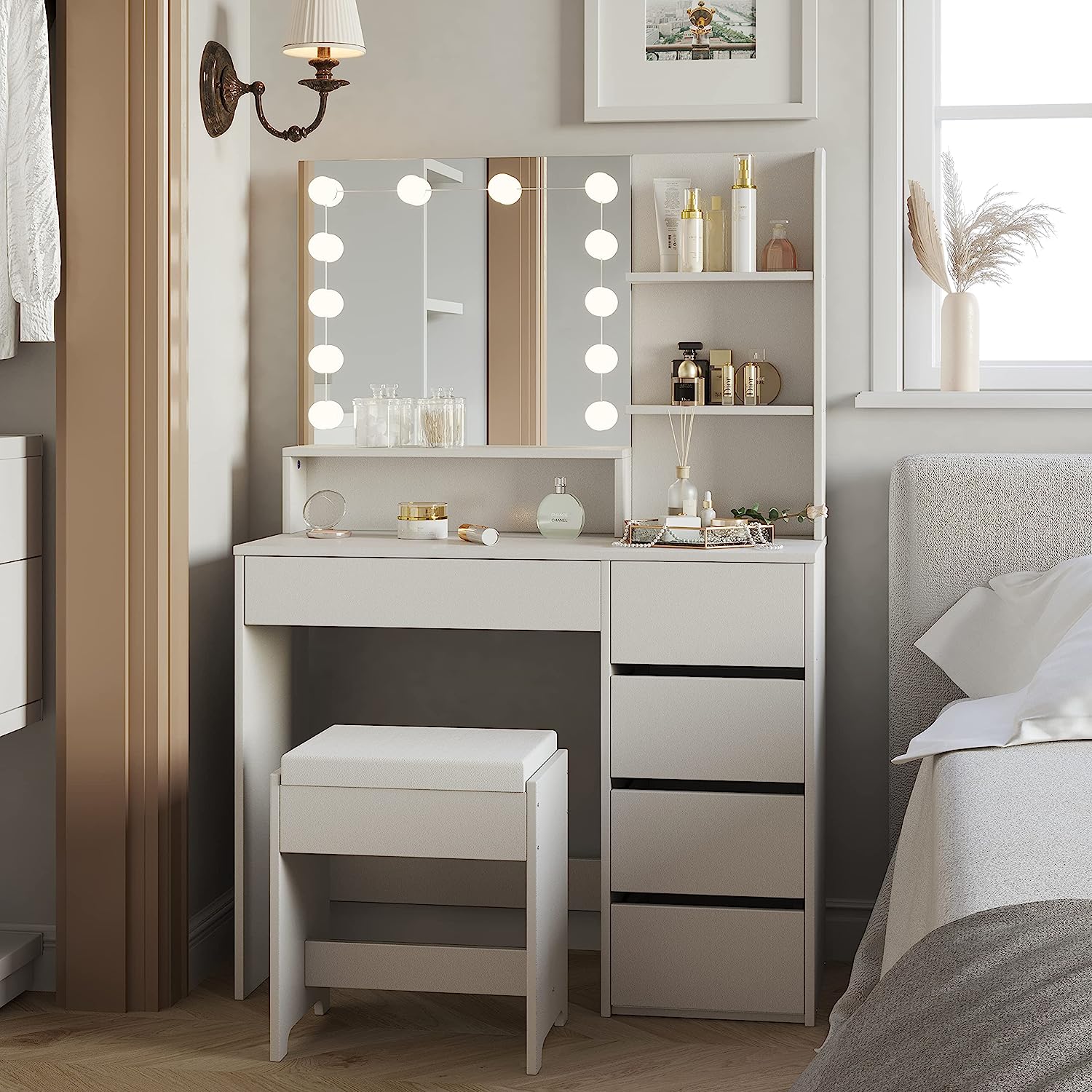

Articles
How Tall Should Countertops Be
Modified: December 7, 2023
Discover the ideal height for countertops in our informative articles. Learn how to choose the perfect countertop height for your kitchen or bathroom.
(Many of the links in this article redirect to a specific reviewed product. Your purchase of these products through affiliate links helps to generate commission for Storables.com, at no extra cost. Learn more)
Introduction
When it comes to designing or renovating a kitchen, one of the most important decisions to make is the height of the countertops. The height of a countertop can greatly affect the overall functionality and comfort of the workspace, as well as the visual appeal of the kitchen. But how tall should countertops be?
The standard height for kitchen countertops is typically around 36 inches (92 cm). This measurement is based on decades of ergonomic research and is considered to be the most comfortable height for the average person to work at. However, it’s important to note that this standard height might not be ideal for everyone. There are several factors to consider when determining the appropriate height for your countertops, so that you can create a space that is both practical and tailored to your specific needs.
Key Takeaways:
- Customizing countertop height based on user needs and preferences promotes comfort and functionality, ensuring a kitchen workspace tailored to individual requirements.
- Adjustable countertop heights offer versatility, inclusivity, and future-proofing, accommodating different users and tasks while enhancing the usability of the kitchen.
Read more: How Tall Should A Shed Be
Standard Countertop Height
The standard countertop height of 36 inches (92 cm) is widely used in kitchens and is considered the most common and comfortable height for most people. This height allows for a comfortable working posture and ensures that the countertop is at a convenient height for tasks such as food preparation and cooking.
In addition to the counter height, it’s important to consider the thickness of the countertop material. Standard countertop thickness can vary, but it usually ranges from 1.25 inches to 1.5 inches (3.2 cm to 3.8 cm). This, combined with the standard height, determines the overall finished height of the countertop surface.
It’s worth noting that standard countertop heights may not be suitable for everyone. Factors such as the height and physical abilities of the primary users, as well as any specific needs or preferences, should be taken into account when determining the appropriate countertop height for a particular space.
While the standard countertop height works well for most people, there are situations where adjustments may be necessary.
- Tall Individuals: If you or the primary users of the kitchen are taller than average, you might consider raising the countertop height slightly to ensure a more comfortable working posture.
- Short Individuals: Similarly, if you or the primary users are shorter than average, lowering the countertop height can help prevent strain and ensure ease of use.
- Individuals with Disabilities: For those with mobility limitations or disabilities, customizing the countertop height to suit their specific needs is essential for accessibility and independence in the kitchen.
Ultimately, the standard countertop height serves as a starting point, but it can be adjusted to accommodate individual needs and preferences. By considering factors such as the height of the primary users, accessibility requirements, and personal comfort, you can customize the countertop height to create a kitchen workspace that is both functional and comfortable for everyone who uses it.
Factors to Consider for Countertop Height
When determining the ideal countertop height for your kitchen, there are several factors that you should take into consideration. These factors can help you create a workspace that is tailored to your specific needs and preferences, ensuring both functionality and comfort.
1. User Height
The height of the primary users of the kitchen is an important factor to consider. Taller individuals may find a standard countertop height too low, leading to discomfort and strain. On the other hand, shorter individuals may struggle with a standard height that is too high. Adjusting the countertop height based on the average height of the users can greatly improve the ergonomics of the space.
2. Tasks and Activities
The types of tasks and activities that will be performed on the countertops should also be taken into account. If you primarily use your kitchen for basic cooking and food preparation, a standard height may be sufficient. However, if you frequently engage in activities that require a lot of standing, such as baking or working with large cutting boards, you may prefer a slightly lower countertop height for improved comfort and control.
Read more: How Tall Should A Pergola Be?
3. Accessibility
Accessibility is an important consideration for individuals with mobility limitations or disabilities. Countertop height should be adjusted to ensure that everyone can easily reach and use the workspace safely. This may involve lowering the countertop height or incorporating lower sections of countertop specifically designed for seated users.
4. Appliances and Fixtures
Take into account the height and depth of your appliances and fixtures when determining the countertop height. This includes factors such as the height of your stove, the depth of your sink, and the placement of other built-in appliances. Ensuring that these elements align with the countertop height will promote a cohesive and functional kitchen design.
5. Personal Comfort
Ultimately, personal comfort should guide your countertop height decision. Experiment with different heights and consider how it feels to work at each level. Pay attention to your posture, reach, and comfort as you perform common kitchen tasks. Making adjustments based on your personal comfort can significantly improve your user experience in the kitchen.
By carefully considering these factors, you can determine the appropriate countertop height for your kitchen. Customizing the height based on user height, tasks, accessibility needs, appliance placement, and personal comfort will ensure that your kitchen workspace is optimized for functionality, comfort, and enjoyment.
Ergonomic Considerations for Countertop Height
Ergonomics plays a crucial role in creating a functional and comfortable kitchen space. Choosing the right countertop height is essential for promoting good posture, reducing strain and fatigue, and enhancing overall productivity in the kitchen. Here are some key ergonomic considerations to keep in mind when determining the countertop height:
Read more: How Tall Should Bookshelves Be
1. Neutral Posture
One of the primary goals of ergonomics is to achieve a neutral posture, which minimizes stress on muscles and joints. The countertop height should allow your wrists, arms, and shoulders to remain in a relaxed and natural position while you’re working. Avoid excessive bending or reaching that can strain your body over time.
2. Bend and Lift Zones
Consider the height of your countertops in relation to common movements in the kitchen, such as bending to access lower cabinets or lifting heavy objects. The countertop height should be designed to minimize the need for excessive bending or lifting, reducing the risk of back strain and injury. A comfortable countertop height can make tasks like chopping, kneading dough, or cleaning much easier and more efficient.
3. Work Surface Depth
When choosing a countertop height, it’s important to consider the depth of the work surface. A deeper countertop allows for more workspace and can accommodate tasks that require additional space, such as meal preparation or working with large ingredients. However, be mindful that a deeper countertop may require additional reach and could strain your arms and shoulders if not adjusted accordingly.
4. Eye-Level Viewing
Consider the height of your countertops in relation to your line of sight. It is ideal to have work surfaces at eye level or slightly below to reduce strain on your neck and upper back. This allows you to maintain a more relaxed and comfortable position while working, especially when reading recipes or using electronic devices while cooking or baking.
Read more: How Tall Should A Deer Fence Be
5. Accommodating Multiple Users
If you have multiple people using the kitchen with different heights and preferences, consider incorporating adjustable countertop heights. This allows each user to customize the countertop height to their individual needs, ensuring optimal comfort and productivity for everyone in the household.
Remember, ergonomics is all about finding the right balance between comfort, functionality, and safety. By carefully considering these ergonomic factors and customizing your countertop height accordingly, you can create a kitchen workspace that promotes productivity, minimizes strain, and enhances your overall cooking experience.
Adjustable Countertop Heights
While standard countertop heights work well for many individuals, there are situations where adjustable countertop heights can provide increased functionality and comfort. Adjustable countertops offer the flexibility to customize the height based on the specific needs and preferences of the users. Here are some key considerations and benefits of adjustable countertop heights:
1. Multiple Users and Height Variations
In households with multiple individuals of varying heights, adjustable countertop heights can accommodate everyone’s needs. Whether you’re working in the kitchen, sitting at a bar-top, or using a dining table, the ability to adjust the height ensures that each individual can work comfortably and efficiently.
2. Accessibility and Universal Design
Adjustable countertop heights are particularly beneficial for individuals with mobility limitations or disabilities. By customizing the height, individuals who use wheelchairs or have difficulty standing can access the kitchen workspace at a comfortable level. This promotes inclusivity and empowers individuals to independently participate in cooking and other kitchen activities.
Read more: How Tall Should A Table Lamp Be
3. Convenience for Different Tasks
The ability to adjust the countertop height makes it easier to perform a variety of tasks in the kitchen. For example, a lower countertop height can be ideal for kneading dough or rolling out pastry, providing better control and reducing strain on the arms and shoulders. On the other hand, a higher countertop height may be more comfortable for daily food preparation tasks or using appliances.
4. Future-Proofing
Adjustable countertop heights offer the advantage of future-proofing your kitchen. As the needs and requirements of your household change over time, the flexibility of adjustable heights allows you to modify the kitchen space accordingly. This can be especially valuable if you plan to age in place or anticipate changes in mobility and accessibility needs in the future.
5. Enhanced Versatility
Adjustable countertop heights can also offer versatility in other areas of the home. For example, in multi-purpose spaces like home offices or craft rooms, an adjustable countertop can transform a workspace into a standing desk or accommodate different activities and projects.
There are several options for incorporating adjustable countertop heights, including electric or manual mechanisms. Electric systems utilize motors to adjust the height with the push of a button, while manual systems may involve hydraulic or hand-operated adjustments. Discussing your specific needs with a design professional can help determine the best choice for your kitchen.
Adjustable countertop heights provide the flexibility to create a kitchen workspace that is customized to your unique needs. Whether it’s for accommodating different users, ensuring accessibility, or maximizing functionality, the ability to adjust countertop heights can greatly enhance the usability and comfort of your kitchen.
Conclusion
Choosing the right countertop height is a crucial consideration when designing or renovating a kitchen. While the standard countertop height of 36 inches (92 cm) is widely used and considered comfortable for most individuals, it’s important to take various factors into account to ensure an optimal workspace.
Factors such as user height, tasks and activities, accessibility needs, appliance placement, and personal comfort all play a role in determining the ideal countertop height. Adjusting the height based on these factors can help promote good posture, reduce strain and fatigue, and enhance overall productivity in the kitchen.
In cases where multiple individuals with different heights will be using the kitchen, or for individuals with mobility limitations or disabilities, adjustable countertop heights offer a practical solution to accommodate everyone’s needs. This flexibility promotes inclusivity and ensures that the kitchen workspace is accessible and comfortable for everyone in the household.
By considering ergonomic principles and customizing the countertop height accordingly, you can create a kitchen that not only looks visually appealing but also promotes a healthy and efficient cooking environment. Whether you choose a standard height, opt for adjustable countertops, or make any necessary adjustments to the standard height, the ultimate goal is to create a space that aligns with your unique needs and preferences.
Remember, it’s important to consult with design professionals, contractors, or kitchen specialists who can provide expert guidance and advice based on your specific requirements. They can help ensure that the countertop height is optimized for your comfort, safety, and enjoyment in the kitchen.
By carefully considering the factors outlined in this article and taking the time to plan the countertop height, you can create a functional, comfortable, and visually pleasing kitchen space that serves as the heart of your home.
Frequently Asked Questions about How Tall Should Countertops Be
Was this page helpful?
At Storables.com, we guarantee accurate and reliable information. Our content, validated by Expert Board Contributors, is crafted following stringent Editorial Policies. We're committed to providing you with well-researched, expert-backed insights for all your informational needs.












0 thoughts on “How Tall Should Countertops Be”